In the germanium transistor era, the RF transistors were PNP small signal devices. Some of these small metal cased BJTs had 4 leads instead of the usual 3. The metal can was isolated and the 4th lead was called the screen and was connected to an internal screen. Common european example part numbers of such devices are:
- AF116
- AF117
- AF126
I have even seen such transistors in early solid state MW AM car radios, and the popular Phillips 1960s electronics set had an AF116.
Sure there were some reliability issues with the screens shorting due to tin whiskers but they were not that bad. The long leads of the day would undermine the effectiveness of the screen at HF but the lead could be cut shorter.
- Why don't they make SMD screened Si or GaAs or GaN devices today?
- Is a screen expensive to manufacture?
- Would there still be reliability issues?
